No matter how good your product is, if you can’t convey its value to potential customers, they’ll never experience what you’ve created.
That’s why sales pages are so important. With the right copy, you can give visitors a clear understanding of what they’ll get and why it’s valuable.
Not too long ago, our company, Feast, was failing in that regard. We offer a program to help busy people get into the habit of cooking. Late last summer, I asked a well-respected content marketer for feedback on our homepage. Following a lengthy pause, he remarked, “It’s clear to me that your homepage reflects a lack of customer research.”
He was right. Our homepage offered little to no context explaining why someone should feel compelled to purchase a class. Our sales, accordingly, were lacking.
With this in mind, my cofounder, David, and I returned to the drawing board.
After a lot of research, including surveying existing customers and looking at their Facebook likes and interests, we made a list of products and businesses that we thought overlapped with our potential customers. As a company focused on health and behavioral change, these included Weight Watchers, CrossFit, Tim Ferriss’s 4 Hour Workweek and 4 Hour Body, and Ramit Sethi’s I Will Teach You To Be Rich Earn 1K and Find Your Dream Job.
To learn how to write an effective sales page, we dove into the copy of these similar content-focused programs. We took a good, hard look at the language the websites use to sell products, and we found there are 5 techniques consistent among all of them.
We incorporated all 5 of the techniques into a new, long-form sales page.
It’s still early, but after relaunching with the new sales copy, we saw our sales increase tenfold in the first month (over the average of monthly sales in the previous 11 months).
#1: The Hook – Use the customer’s words, not yours, to describe their problem
You know what it’s like when you’re reading something and you realize, “Whoa, this describes me to a T.”
Seeing yourself in the text compels you to read further. Maybe pass it along to a friend. Maybe share it with all of your friends.
We like content that feels tailored to us. We want our opinions to be validated (or changed through education) by what we read. The New York Times’s “Psychology of Sharing” study found that 68% of medium-to-heavy social sharers share content “to give people a better sense of who they are and what they care about.”
This is why BuzzFeed writes articles like “26 Things That Only Anxious People Will Relate To” or “21 Things That Inevitably Happen When You Work in an Office.”
The best way to keep a potential customer from immediately exiting the page is to talk about them, not you. A good mental check is to look at how many times you use the word “you” instead of “I” or “we.”
Look at the following examples. Notice that the customer, not the company, is the focus. Also, notice that you can imagine who this language is tailored to just by reading the opening sentence.
IWTYTBR EARN 1K:
4 HR WORKWEEK SALES PAGE:
Our old tagline at Feast was “A better way to learn how to cook.” Better how? Better according to whom? It was too vague. So we revised our opening to this:
#2: The Buildup – Be transparent about your product’s R&D
Your first instinct when you’ve worked really hard on a product might be to hide all of the work it took to get there. You want customers to feel like it just magically appeared for them, right?
Wrong. People like to hear about the work you put into the thing they’re about to open their wallets for.
Think about it. As a customer, how does it make you feel to know that someone spent hundreds of hours crafting the class you’re about to pay for? That your car was crash-tested in thousands of scenarios? That each and every piece of your pasta was shaped by hand?
Time invested in a product signifies quality. When you give to your customers, they want to give back to you. By investing in each other, it also helps build a two-way relationship of trust.
Each of the examples below discusses the time and energy that was put into creating the product, sometimes quantifiably, sometimes using visual language such as “obsessive” and “fetish.”
WEIGHT WATCHERS:
4 HOUR BODY:
IWTYTBR DREAM JOB:
At Feast, on our old homepage, we didn’t talk about the time we spent developing our product at all, but now we realize we actually have a great story to tell. The fact is we experimented with (by my count) four other products over a year and a half to try to pin down what it was that actually got people to cook. But each time we relaunched, we would strip everything away and not show any of the love and work we had put into developing the next solution.
So we wrote a whole story about it on our site:
#3: The Branding – Align yourself with a higher principle or mission that goes beyond your product
If CrossFit positioned itself as “this one weird trick” to get a ripped body, it would be easy to write it off as another fad among a million other options that supposedly get you in shape.
CrossFit knows you’re coming to their website with these suspicions. So they sidestep them elegantly by opening with: “CrossFit begins with a belief in fitness.”
In other words, if you’re anti-CrossFit, you’re anti-fitness.
Instead of trying to be special or faddish in some way, boil down your company to something everyone can agree on.
WEIGHT WATCHERS:
CROSSFIT:
4 HR WORKWEEK:
4 HR BODY:
At Feast, we played too hard on people’s desire for elitism around food. We alienated potential customers by teaching things like fermentation or salt roasting, even though our intention was to make those things feel not scary. We thought of elitism as an enticing reward, but really, it just made our company hard to relate to.
Framing ourselves that way also put us into direct competition with every other cooking education company that had a similar approach. When we rewrote our copy, we decided to align ourselves with something much simpler and relatable:
#4: The Solution – Use specific and measurable terms to describe your solution
Do you remember that, as discussed above, you want your customers to read a description of their problem and think “Whoa, they’re talking about me”? You want the same thing with a description of the solution.
Use the customer’s language to describe the solution. If you don’t know what their language is, identify some potential customers and ask them to describe their ideal solution. Pay attention to the specific words they use, and then use them in your sales copy.
The other part of this is to be as measurable as possible with your solution. Promising someone they’ll earn “more money” is less convincing than promising they’ll earn an extra $1000 per month starting in 3 weeks. They have something to hold you to, and that accountability helps build trust.
Using specific numbers also suggests you’ve done this once or twice before, so you’ve seen it work with other customers to the extent that you can predict effects.
If you don’t have metrics to stand behind, at least use numbers wherever you can to build a more concrete picture. For example, “monthly five-figure income with zero management” is better than “make money on your own.”
Here are some examples of concrete claims:
WEIGHT WATCHERS:
4 HOUR WORKWEEK:
IWTYTBR DREAM JOB:
Here’s how we incorporated specific and measurable solutions into our sales copy:
#5: The Close – Anticipate their hesitation and call out their excuses
I think this strategy is often overlooked, but it can be very powerful.
After you’ve made your pitch, you’ll have some people who are immediately sold and ready to buy. Others will be totally uninterested and exit the page. Still others will be on the fence.
For those on the fence, understanding exactly what their hesitations might be, and calling out their excuses, can tip them into making a purchase.
This may seem weird if you think acknowledging the most common excuses might cause people who were leaning toward buying to walk away. The goal here is to acknowledge potential excuses while turning them into compelling reasons to buy the product anyway.
Again, this requires getting to know your potential customer and finding out the EXACT language they might use to explain why they aren’t willing to make a purchase.
CROSSFIT:
4 HR BODY:
IWTYTBR DREAM JOB:
WEIGHT WATCHERS:
Here’s an excerpt from our call-out section:
Stop Reinventing the Wheel
Hooking customers into your product can sometimes feel like a shot in the dark, but many successful companies are using the same techniques to sell their product. Instead of trying to reinvent the wheel, start with what’s working for other products, and see how it can improve your conversions.
About the Author: Nadia Eghbal is the cofounder of Feast, the home of the Feast Bootcamp: a 30-day online program that helps you build a habit of cooking while taking you through the fundamentals of practical, healthy home cooking. You can find her writing about health and habit building on the Feast Blog. Say hello @nayafia.

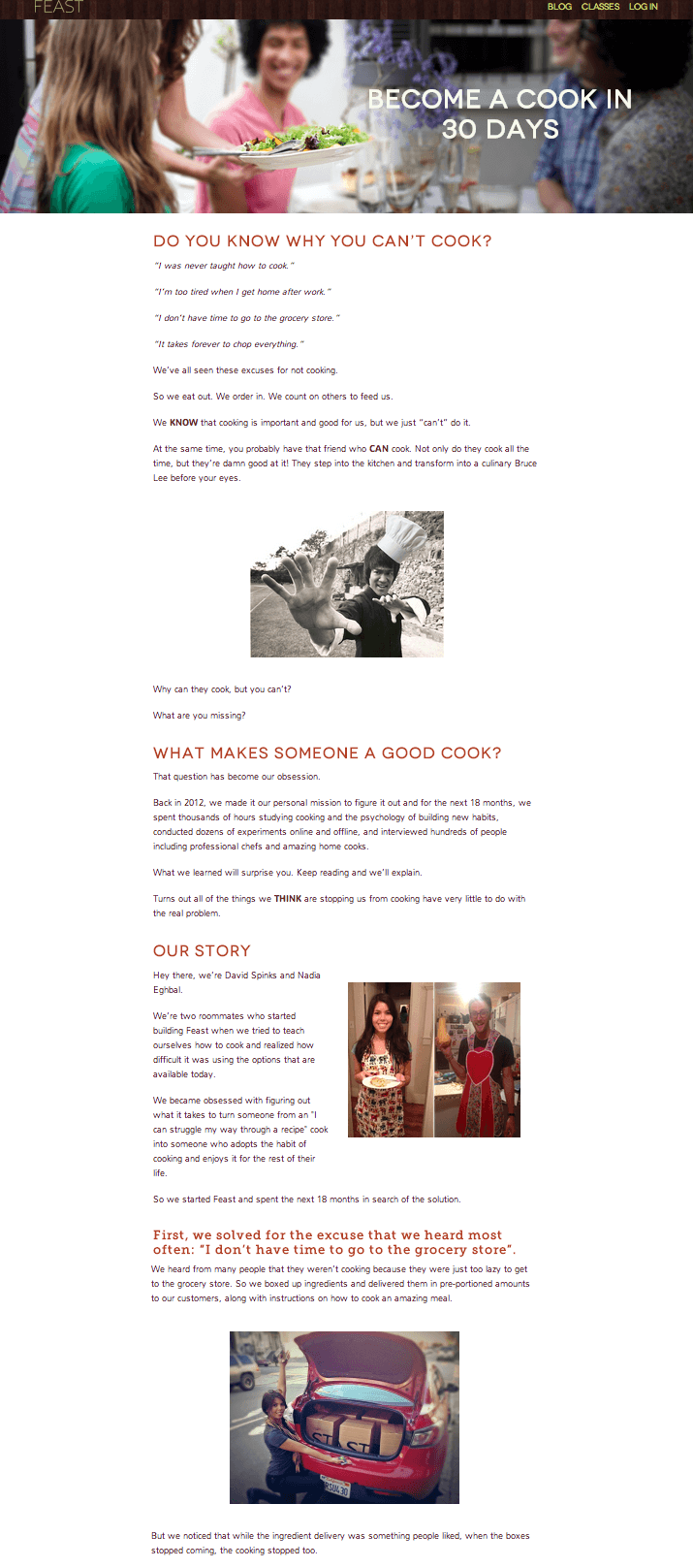





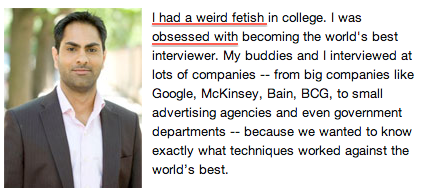
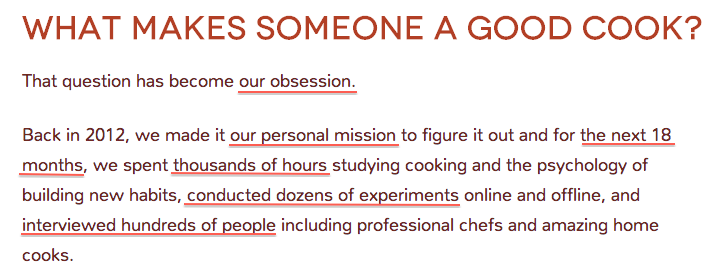


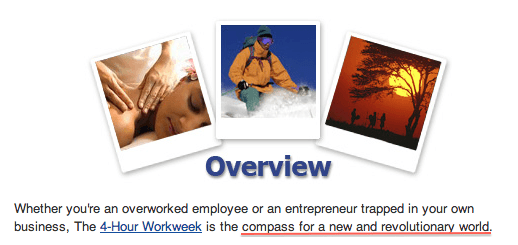



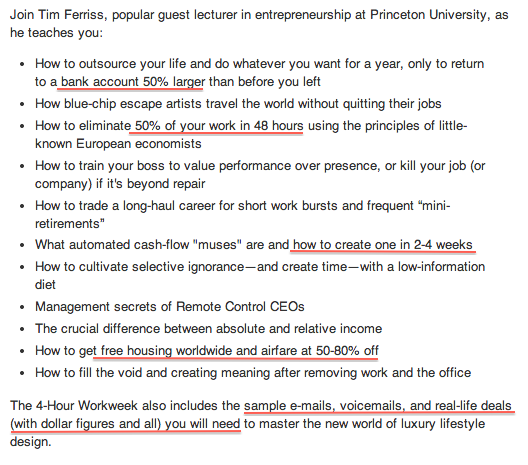
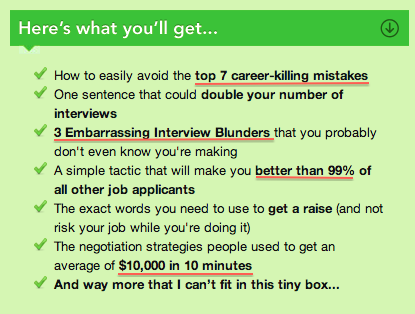

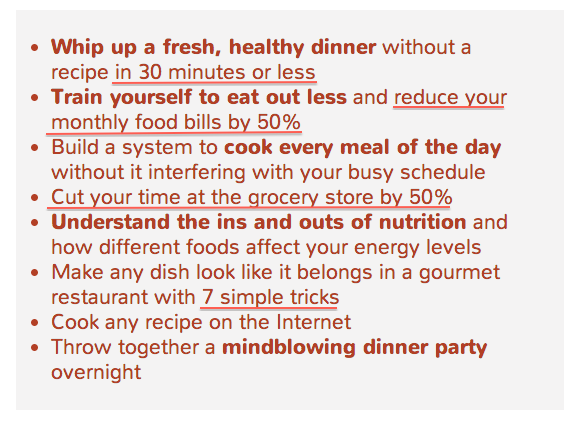



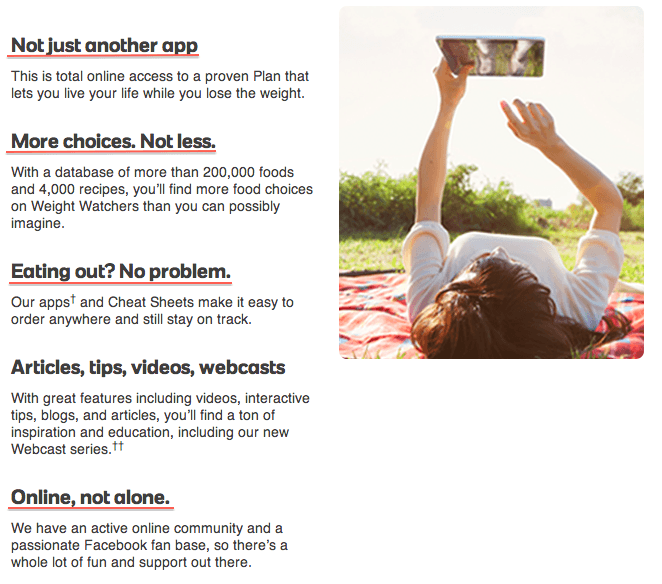
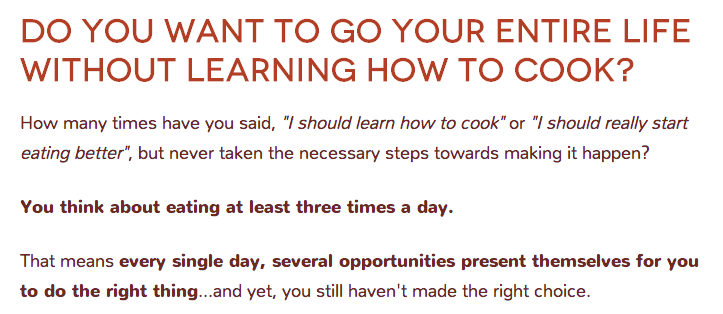
Comments (10)